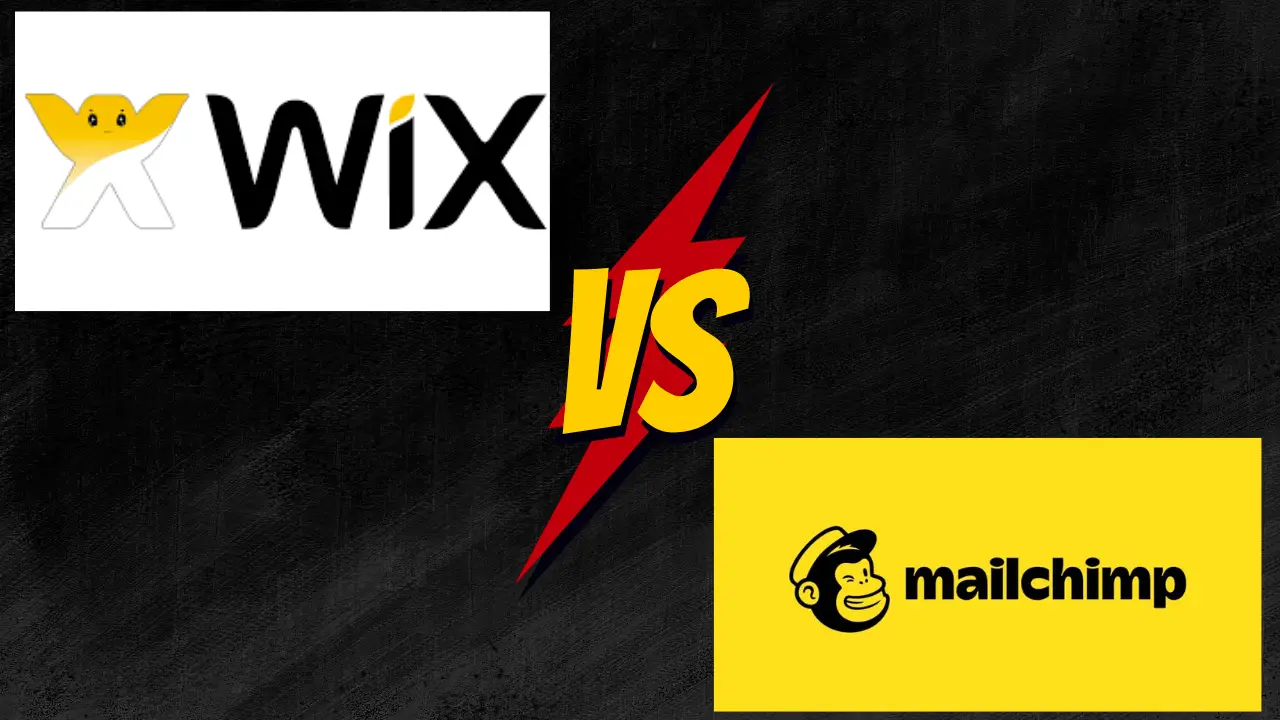In the ever-evolving digital marketing landscape, choosing the right tools to promote your business is crucial. Two of the most prominent players in this field are Wix vs Mailchimp. Both platforms offer many features to help businesses reach their audience, but they cater to different aspects of marketing. In this post, we’ll dive deep into the features, benefits, and limitations of Wix and Mailchimp to determine which is best for your marketing needs.
Understanding Wix and Its Marketing Features
Wix is primarily known as a website builder that allows users to easily create and manage their websites. However, Wix also offers marketing tools to help businesses grow their online presence.
Key Marketing Features of Wix:
1. Wix Email Marketing: Create and send beautiful email campaigns directly from the Wix platform.
2. Wix SEO Wiz: A built-in tool that guides you through optimizing your website for search engines.
3. Social Posts: Design and share professional social media posts using Wix’s templates.
4. Wix Ascend: An all-in-one business solution that includes chat, automations, invoices, and more.
Here’s a comparison chart that outlines the key marketing features of Wix.
| Feature | Description | Benefits |
|---|---|---|
| Wix SEO Wiz | An intuitive SEO tool that creates a personalized plan to help users improve their site’s search engine ranking. | Improves visibility on search engines, driving more organic traffic to the website. |
| Email Marketing | Built-in email marketing tools that allow users to create, send, and analyze email campaigns directly from the Wix dashboard. | Helps engage with customers and leads, promoting repeat visits and conversions. |
| Social Posts | Users can create and share professional social media content directly from the Wix platform, including images and videos. | Enhances social media presence, increasing brand awareness and customer interaction. |
| Wix Ascend | An all-in-one business solution that provides marketing, customer management, and workflow automation. | Streamlines business operations and enhances customer relationship management. |
| Wix Logo Maker | An AI-powered logo design tool that enables users to create their own professional logos for their brand. | Provides a cost-effective way to create a unique and professional brand identity. |
| Wix Analytics | Comprehensive analytics tools that track website performance, visitor behavior, and campaign effectiveness. | Offers insights to optimize marketing strategies and improve user experience. |
| Wix Chat | A live chat feature that can be added to the Wix website, allowing real-time interaction with site visitors. | Improves customer service and engagement, potentially increasing sales and customer satisfaction. |
| Wix Forms | A variety of customizable forms that can be added to websites to collect information from visitors, such as contact details or feedback. | Aids in lead generation and provides valuable data for market research. |
| Wix Video Maker | A tool for creating and sharing promotional videos, including video templates and easy-to-use editing features. | Engages visitors with dynamic content and helps convey brand messages effectively. |
| Wix App Market | An app marketplace offering a wide range of third-party marketing tools and integrations to enhance the website’s capabilities. | Provides flexibility to extend marketing features and integrate with other platforms. |
| Wix Automations | Allows users to set up automatic responses and actions triggered by specific events, such as sending a welcome email when someone signs up for a newsletter. | Saves time and ensures consistent communication with customers and leads. |
| Wix Mobile App | A mobile app that lets users manage their website and marketing efforts on the go. | Provides convenience and flexibility to manage marketing tasks from anywhere. |
| Wix Booking | An online scheduling system that allows clients to book appointments or services directly through the Wix website. | Streamlines the booking process, improving customer experience and reducing no-shows. |
| Wix Stores | An e-commerce platform for creating an online store, complete with marketing features like coupons, abandoned cart recovery, and store analytics. | Facilitates online sales and provides tools for promoting products and analyzing sales data. |
| Wix Blog | A blogging platform with features to create, manage, and promote blog content, including SEO tools and social sharing options. | Helps establish thought leadership and improves SEO through content marketing. |
Pros of Using Wix for Marketing:
– Integrated platform: Manage your website and marketing campaigns from a single dashboard.
– Ease of use: User-friendly interface with drag-and-drop functionality.
– Customizable templates: Wide variety of templates for emails and social media posts.
Cons of Using Wix for Marketing:
– Limited email marketing features compared to dedicated email marketing services.
– SEO tools are basic and might not suffice for advanced SEO strategies.
Understanding Mailchimp and Its Marketing Features
Mailchimp started as an email marketing service but has expanded into a full-fledged platform. It’s widely recognized for its robust email marketing capabilities and offers additional tools for small businesses to manage their marketing efforts.
Key Marketing Features of Mailchimp:
1. Advanced Email Campaigns:Create, send, and track email campaigns with sophisticated segmentation and personalization options.
2. Marketing Automation: Set up automated workflows to engage customers based on their behavior.
3. Landing Pages and Digital Ads: Build landing pages and run digital ads across social media and Google.
4. Audience Management: Keep track of your contacts with rich audience insights and segmentation.
Here’s a comparison chart that outlines the key marketing features of Mailchimp, a popular email marketing and automation platform:
| Feature | Description | Benefits |
|---|---|---|
| Email Campaigns | Users can create and send email campaigns with customizable templates and personalization options. | Helps engage with customers and leads, promoting brand loyalty and conversions. |
| Automation | Mailchimp offers marketing automation that allows users to create targeted emails that send when triggered by a specific date, event, or contact’s activity. | Saves time and ensures consistent communication with customers and leads. |
| A/B Testing | Users can test different versions of emails to see which one performs better based on the open rate, click rate, and more. | Enables optimization of email campaigns based on data-driven insights. |
| Analytics | Comprehensive analytics tools that track email performance, subscriber activity, and campaign effectiveness. | Offers insights to optimize email marketing strategies and improve user engagement. |
| CRM | Built-in Customer Relationship Management (CRM) tools to manage and learn about your audience. | Enhances customer relationship management and helps tailor marketing efforts. |
| Landing Pages | Users can create landing pages to promote products, events, or special deals. | Helps drive conversions and captures lead information for future marketing efforts. |
| Social Media Ads | Users can create Facebook, Instagram, and Google remarketing ads directly within Mailchimp. | Enhances social media presence, increasing brand awareness and customer interaction. |
| Postcards | Mailchimp allows users to send physical postcards around the world. | Provides a unique way to engage with customers and stand out from digital-only strategies. |
| Surveys | Users can create surveys to collect feedback or learn more about their audience. | Provides valuable data for market research and product development. |
| Multivariate Testing | Users can test up to 8 variations of an email to see which one performs best. | Enables advanced optimization of email campaigns based on data-driven insights. |
| Segmentation | Users can create segments in their audience based on shared behaviors, preferences, and demographics. | Allows targeted marketing efforts, improving engagement and conversion rates. |
| Integrations | Mailchimp integrates with a wide range of third-party apps and services. | Provides flexibility to extend marketing features and integrate with other platforms. |
| Mobile App | A mobile app that lets users manage their email marketing efforts on the go. | Provides convenience and flexibility to manage marketing tasks from anywhere. |
Pros of Using Mailchimp for Marketing:
– Comprehensive email marketing features with advanced automation.
– Detailed reporting and analytics to track campaign performance.
– Integration with a wide range of third-party apps and services.
Cons of Using Mailchimp for Marketing:
– Can be overwhelming for beginners due to the complexity of features.
– The pricing model can get expensive as your contact list grows.
Wix vs Mailchimp: Which is Best for Marketing?
The answer to this question largely depends on your primary marketing goals and the level of sophistication you need.
If your focus is on email marketing, Mailchimp is the clear winner. It offers more advanced features in terms of automation, segmentation, and analytics than Wix. Mailchimp is designed to help you create highly targeted campaigns that can grow with your business.
For those who prioritize a web presence and want an all-in-one solution, Wix could be the better choice. It allows you to manage your website and basic marketing efforts within the same ecosystem, which is ideal for those who prefer a more integrated approach.
Conclusion
Both Wix vs Mailchimp have their strengths, and the best choice depends on your specific marketing needs. If you’re looking for a comprehensive email marketing tool with room to scale, Mailchimp is your go-to platform. On the other hand, if you want an all-in-one solution for website management and marketing, Wix is worth considering.
Remember, the best marketing strategy often involves using multiple tools in harmony. You might find that using Wix for your website and Mailchimp for your email campaigns is the perfect combination for your business.


In the end, no matter which platform you choose, the key is to stay consistent with your marketing efforts and continuously adapt to the changing needs of your audience. Happy marketing!

